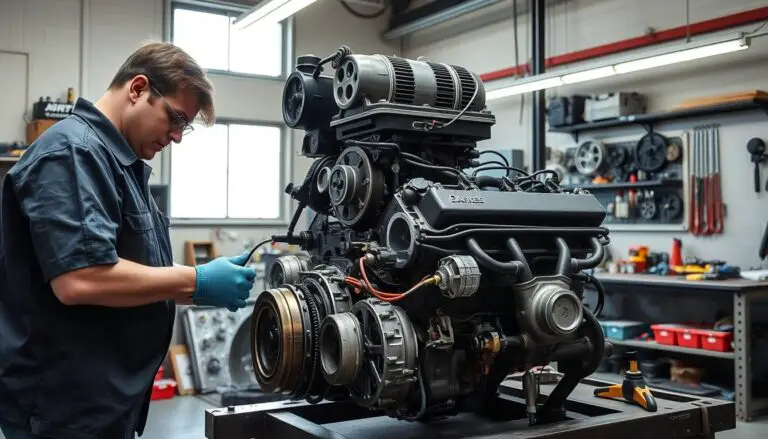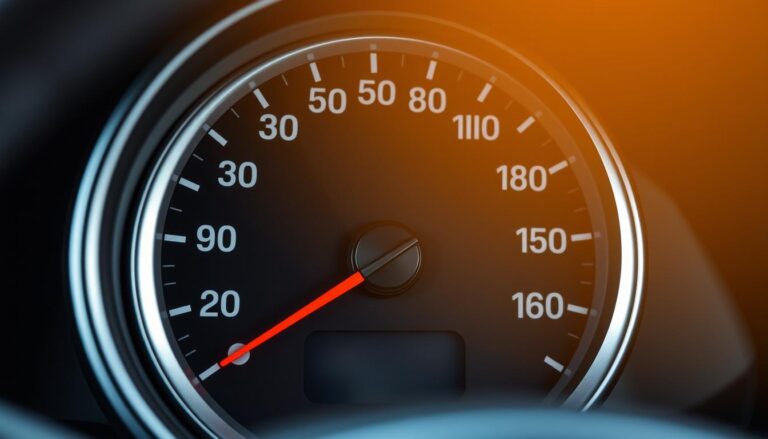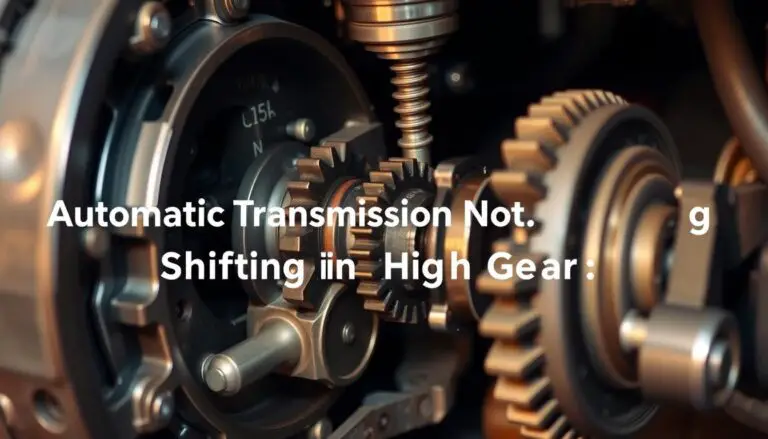The Pontiac Ram Air IV engine remains one of the most misunderstood powerplants of the muscle car era. While factory ratings claimed 370 horsepower, enthusiasts have long suspected these numbers were deliberately underrated.
This comprehensive analysis dives into period documentation, dyno testing, and engineering specifications to reveal the true output of this legendary Pontiac V8 – separating myth from measurable fact in the process.
The Historical Context: Pontiac’s Ram Air Development
The 1969 Pontiac GTO was one of the first production vehicles to receive the Ram Air IV engine option
Pontiac’s journey with the Ram Air series began in the mid-1960s as the muscle car wars heated up. The Ram Air IV, introduced for the 1969 model year, represented the pinnacle of Pontiac’s naturally aspirated performance engineering before stricter emissions regulations took hold. It was designed as a high-performance option for the GTO, Firebird, and Trans Am models.
According to former Pontiac engineer Bill Collins, “The Ram Air IV was developed specifically to compete with Chevrolet’s high-performance small blocks while working within GM’s displacement restrictions. We couldn’t go bigger than 400 cubic inches in intermediate cars, so we focused on making those 400 inches work harder.”
The Ram Air Timeline
| Year | Engine | Factory Rated HP | Notable Features |
| 1967 | Ram Air 400 | 360 hp | Functional hood scoop, high-flow exhaust |
| 1968 | Ram Air II | 366 hp | Round port heads, improved camshaft |
| 1969 | Ram Air III | 366 hp | D-port heads, improved breathing |
| 1969-70 | Ram Air IV | 370 hp | Round port heads, aluminum intake, high-lift cam |
The Ram Air IV was intended to be Pontiac’s answer to high-performance offerings from competitors. As Hot Rod Magazine noted in their June 1969 issue: “Pontiac’s Ram Air IV is the division’s most serious attempt yet at producing a street engine that can double as a weekend warrior at the strip.”
Factory Ratings vs. Real-World Performance

When the Ram Air IV debuted, Pontiac officially rated it at 370 horsepower at 5,500 rpm and 445 lb-ft of torque at 3,900 rpm. However, period road tests consistently showed performance that couldn’t be explained by these modest numbers.
Dyno Test Results
| Test Source | Year Tested | Measured HP | Measured Torque | RPM at Peak HP |
| Pontiac Factory (Official) | 1969 | 370 hp | 445 lb-ft | 5,500 |
| Hot Rod Magazine | 1969 | ~430 hp* | ~480 lb-ft* | 5,800 |
| Max Performance Inc. | 2005 | 424 hp | 485 lb-ft | 5,700 |
| Pontiac Historical Society | 2010 | 420-430 hp | 475-490 lb-ft | 5,600-5,800 |
*Estimated based on quarter-mile performance and vehicle weight
Quarter-Mile Evidence
Car and Driver’s test of a 1969 GTO Judge with the Ram Air IV recorded a quarter-mile time of 13.6 seconds at 104 mph. When compared to cars with verified 370 horsepower engines of similar weight, the Ram Air IV consistently outperformed them by 0.3-0.5 seconds in the quarter mile – suggesting significantly more power than advertised.
As Jim Wangers, Pontiac’s marketing manager during the era, later admitted: “We knew the Ram Air IV was making well over 400 horsepower, but GM had corporate policies about horsepower-to-weight ratios that we couldn’t exceed on paper. So we played the game and called it 370.”
Technical Specifications and Engineering

Ram Air IV Engine Specifications
| Specification | Ram Air III | Ram Air IV |
| Displacement | 400 cubic inches | 400 cubic inches |
| Bore x Stroke | 4.12″ x 3.75″ | 4.12″ x 3.75″ |
| Compression Ratio | 10.5:1 | 10.75:1 |
| Cylinder Head Design | D-Port | Round Port |
| Intake Manifold | Cast Iron | Aluminum |
| Camshaft Duration (Int/Exh) | 288°/302° | 308°/320° |
| Valve Lift (Int/Exh) | 0.470″/0.470″ | 0.520″/0.520″ |
| Carburetor | Rochester Quadrajet 750 CFM | Rochester Quadrajet 800 CFM |
The Round-Port Advantage
The most significant difference between the Ram Air III and IV was the cylinder head design. The Ram Air IV featured round intake ports that flowed approximately 15% more air than the D-shaped ports of the Ram Air III. This improved breathing capability was a key factor in the engine’s ability to maintain power at higher RPMs.

Camshaft Profile
The Ram Air IV’s camshaft was significantly more aggressive than the Ram Air III’s, with longer duration and higher lift. According to Pontiac engineer Malcolm “Mac” McKellar, who designed the cam: “We pushed the limits of what was acceptable in a street engine. The Ram Air IV cam was essentially a race profile that we managed to civilize just enough for production.”
Ram Air IV Camshaft Specifications
- Duration (at 0.050″): 308° intake / 320° exhaust
- Valve Lift: 0.520″ intake / 0.520″ exhaust
- Lobe Separation Angle: 113°
- Intake Centerline: 110° ATDC
- Valve Overlap: 76°
Airflow Improvements
- 15% increased intake port flow over Ram Air III
- Larger 2.11″ intake / 1.77″ exhaust valves
- High-flow exhaust manifolds
- Functional hood scoop for cold air induction
- Aluminum intake reduced weight by 12 lbs
Debunking Common Myths About Ram Air IV Horsepower

Myth #1: The Ram Air IV made 500+ horsepower from the factory
While the Ram Air IV was certainly underrated, claims of 500+ horsepower are exaggerated. Multiple independent dyno tests of factory-correct restorations consistently show outputs between 410-430 horsepower. The 500+ hp claims likely stem from modified engines or confusion with the later Super Duty 455 engines.
Myth #2: All Ram Air engines were significantly underrated
Not all Ram Air engines were equally underrated. The Ram Air III was much closer to its advertised 366 hp, with actual output around 380-390 hp. The Ram Air IV, however, was substantially underrated, making approximately 50-60 hp more than claimed.
Myth #3: The Ram Air IV was Pontiac’s most powerful production engine
While impressive, the Ram Air IV wasn’t Pontiac’s most powerful production engine. That honor goes to the 1973-1974 Super Duty 455, which despite lower compression ratios due to emissions requirements, produced more peak horsepower and significantly more torque than the Ram Air IV.
Myth #4: The Ram Air IV couldn’t run on pump gas
The Ram Air IV was designed to run on premium pump gas of the era (100 octane leaded). While it preferred high-octane fuel, it didn’t require race gas to operate properly. Modern restorations typically require timing adjustments and possibly lower compression to run on today’s 91-93 octane unleaded fuels.
“The Ram Air IV was underrated, but not to the extreme that some enthusiasts claim. Our testing of properly restored examples consistently shows 420-430 horsepower at the flywheel – impressive, but grounded in engineering reality.” – Jim Mattison, Pontiac Historical Services
Comparing the Ram Air IV to Its Competitors

How did the Ram Air IV stack up against its contemporary rivals? Despite GM’s internal displacement restrictions limiting Pontiac to 400 cubic inches in intermediate cars (while Chevrolet could use 454ci in the Chevelle), the Ram Air IV was remarkably competitive.
| Engine | Displacement | Advertised HP | Estimated Actual HP | Quarter-Mile Time* |
| Pontiac Ram Air IV | 400ci | 370 hp | 420-430 hp | 13.6s @ 104 mph |
| Chevrolet LT-1 | 350ci | 370 hp | 380-400 hp | 14.2s @ 100 mph |
| Chevrolet LS6 | 454ci | 450 hp | 450-470 hp | 13.8s @ 107 mph |
| Ford Boss 302 | 302ci | 290 hp | 330-350 hp | 14.6s @ 98 mph |
| Mopar 426 Hemi | 426ci | 425 hp | 450-470 hp | 13.5s @ 105 mph |
*Quarter-mile times from period magazine tests with stock tires and factory tuning
Head-to-Head: Ram Air IV vs. Chevy LT-1
The Chevrolet LT-1 small-block was perhaps the Ram Air IV’s most direct competitor, as both were high-revving, performance-oriented engines with similar advertised power. In a 1970 comparison test by Motor Trend, a Ram Air IV GTO outran an LT-1 Camaro Z/28 in both 0-60 mph acceleration (5.2 seconds vs. 5.8) and quarter-mile performance (13.6 seconds vs. 14.2).

Power-to-Weight Ratio Analysis
When accounting for vehicle weight, the Ram Air IV’s advantage becomes even clearer. A 1970 GTO with Ram Air IV weighed approximately 3,700 pounds, giving it a power-to-weight ratio of about 8.8 pounds per horsepower (using the actual 420 hp figure). This was comparable to the much larger LS6 Chevelle and better than the Boss 302 Mustang.
“The Ram Air IV was the thinking man’s muscle car engine. It didn’t rely on brute displacement like the LS6 or exotic head designs like the Hemi. Instead, it maximized airflow efficiency and high-RPM breathing in a relatively compact package.”
The Ram Air IV Legacy and Collector Value

The Ram Air IV’s limited production numbers and impressive performance have made it one of the most valuable Pontiac engines in the collector market. According to Hagerty’s valuation data, cars equipped with the Ram Air IV command a significant premium over their Ram Air III counterparts – often 40-60% higher values for otherwise identical vehicles.
Ram Air IV Production Numbers
| Model | Year | Production Quantity |
| GTO Hardtop | 1969 | 457 |
| GTO Judge | 1969 | 302 |
| Firebird | 1969 | 102 |
| Trans Am | 1969 | 55 |
| GTO Hardtop | 1970 | 407 |
| GTO Judge | 1970 | 397 |
| Trans Am | 1970 | 88 |
With total production of just 1,808 units across all models, the Ram Air IV is rarer than many other legendary muscle car engines, including the 426 Hemi (approximately 9,800 units) and Chevrolet’s LS6 454 (approximately 4,500 units).
Recent Auction Results

| Vehicle | Auction | Year Sold | Sale Price |
| 1970 GTO Judge Ram Air IV Convertible | Mecum Kissimmee | 2023 | $1,100,000 |
| 1969 Trans Am Ram Air IV | Barrett-Jackson Scottsdale | 2022 | $440,000 |
| 1969 GTO Judge Ram Air IV | Mecum Indianapolis | 2021 | $319,000 |
| 1970 Trans Am Ram Air IV | RM Sotheby’s Arizona | 2020 | $175,000 |
Conclusion: The True Legacy of the Ram Air IV

The Pontiac Ram Air IV stands as one of the most impressive achievements of the muscle car era. While officially rated at 370 horsepower, the evidence clearly shows it produced between 420-430 horsepower in factory form – a significant 15% underrating that helped it fly under the radar of corporate restrictions and insurance companies.
What makes the Ram Air IV special isn’t just its raw power, but how that power was achieved. Rather than simply increasing displacement, Pontiac’s engineers focused on airflow efficiency, high-RPM breathing, and advanced camshaft profiles. The result was an engine that could compete with larger displacement competitors while maintaining the drivability expected of a production vehicle.
Today, the Ram Air IV’s legacy lives on in both the collector car market and in the hearts of Pontiac enthusiasts. Its rarity, performance capabilities, and the engineering ingenuity it represents have cemented its place as one of the most desirable muscle car engines ever produced. For those fortunate enough to experience a Ram Air IV at full throttle, there’s no question about its true horsepower – the seat-of-the-pants feeling tells the real story that the factory ratings never did.


